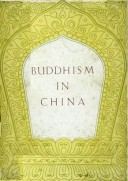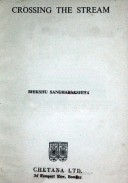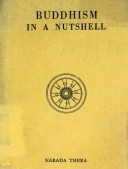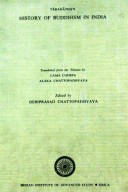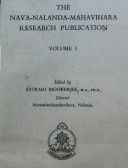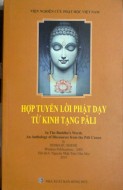Tìm Sách
Sách tiếng Anh-English >> Buddhism In China
Thông tin tra cứu
- Tên sách : Buddhism In China
- Tác giả : Chao Pu-chu
- Dịch giả :
- Ngôn ngữ : Anh
- Số trang : 55
- Nhà xuất bản : Chinese Buddhist Association Peking
- Năm xuất bản : 1957
- Phân loại : Sách tiếng Anh-English
- MCB : 1210000002568
- OPAC :
- Tóm tắt :
I. OUR GRATITUDE
Buddhists should always cherish a feeling of gratitude. Our object of gratitude is not god, but man. We are grateful to men and to the lands in which they live. Therefore in our morning and evening services, we Chinese Buddhists vow to repay the benefaction of the lands in which men live and of all living beings.
As a Chinese citizen and a Chinese Buddhist, I should of course be grateful to my country and my people, I should of course be grateful to our great present and glorious past, and I should of course be grateful to Fa-hsien and Hsuan-tsang. At the same time, I am grateful to India and the Indians, to Nepal and the Nepalese, to the Western Regions* and some of the South-east Asian countries and the peoples of these countries from whom we accepted the faith of Buddhism and absorbed Buddhist culture.
To look back over our history is helpful for our friendship and co-operation today. I wish, therefore, to give a brief account of the historical facts concerning the introduction of Buddhism into China and its development in China.
Two years before the Christian era Yi-chen, an envoy of the King of the Yueh-chi, arrived in Changan (modern Sian) which was then the capital of China. He taught a Buddhist scripture orally to Ching Lu, a scholar of the Imperial Academy. This is the earliest record in Chinese history of the introduction of Buddhism into China. We may infer from this the possibility that Buddhism which had already been introduced into Central Asia from India, spread to the east with travellers as a result of the opening of communications with the Western Regions by Emperor Wu (141-87 B.C.) of the Han dynasty some 120 years prior to that event. There is also a tradition that during the reign of the First Emperor of the Chin dynasty, a contemporary of King Asoka of India, some Indian sramanas arrived in China. But the generally acknowledged inception of Buddhism in China was 66 years after the arrival of Yi-chen, when it is said that Emperor Ming (A.D. 57-75) of the Han dynasty sent a mission of twelve persons to the Western Regions to seek for Buddhism. In A.D. 67 they returned with two Indian monks, Kasyapa-Matanga and Dharmaranya, bringing with them some Buddhist scriptures and images of the Buddha. They started the translation of Buddhist scriptures into Chinese, and it is said that the existing Sutra of Forty-two Chapters, an excerpt of the Agamas, was translated by them. At the same time the first Buddhist monastery in China was built at Loyang, the then capital of China. This was the White Horse Monastery, which is still in existence. It is said that the name of this monastery was derived from the fact that the Buddhist scriptures and images of the Buddha were carried into China on a white horse. Based on this tradition we may consider that Buddhism was not first introduced into China during the reign of Emperor Ming of the Han dynasty, but that its foundations as a religion, acknowledged and supported by the government, were already established in China in that period.
China had Buddhist monks at a very early date, but the first monks only, renounced their homes, shaved their heads and lived under the guidance of a teacher in accordance with the Vinaya rules, without a system of ordination. In A.D. 250 when Dharmakara, a monk of Central India, came to China and founded the ordination altar in the White Horse Monastery at Loyang for the formal ordination of Chinese monks, China began to have properly ordained Bhiksus. As there were no foreign Bhiksunis in China, the first Chinese women who renounced their homes to become Buddhist nuns only received their ordination from the Bhiksus, without a complete system of ordination for Buddhist nuns. In A.D. 429 and 433 when nineteen Buddhist nuns, Devasara and the others, came to China from Ceylon in different groups, Chinese Buddhist nuns were able to have the complete conditions required for Bhiksunis’ full ordination, and China began to have properly ordained Bhiksunis.
The spread of Buddhism in China was inseparable from the task of translating Buddhist scriptures into Chinese. Among the first translators during the 2nd and 3rd centuries A.D., we must mention the names of An-shih-kao of Parthia. Lokaksin of IndoScythia, Sangnavarman and Sanghapala of Soghdiana, and Dharmaraksa who was the first Chinese monk of Indo-Scythian descent who travelled to the West to seek for Buddhism. Due to their efforts many Sravakayana and Mahayana scriptures were translated into the Han language. As translation work was in its infancy, conditions were limited and translation was not carried out in a planned and systematic way. Few of the works were full translations and no fixed style of translation could be established. But they carried out the task of opening up the field in a distinguished manner, founded a position for Buddhism among thinking Chinese people and enlarged its influence.
The prevalence of Buddhism in China started from the 4th century A.D. The Ven. Tao-an of that time was a man of great importance. He was the first enthusiastic Buddhist preacher of China and he sent his disciples to various places to propagate Buddhism. He was the first founder of the system of Sangha in China. He searched assiduously for Vinaya books, in order to make the incomplete Vinaya-pitaka of his days complete, and instituted a monastic system which all the monks and nuns of his time adopted. (It was Tao-an who initiated the custom that the Chinese monks abolish their original surnames after renouncing their homes and assume the new surname of “Shih” the Tang dynasty and Princess Bhrkuti of Nepal, Srongtsan Gambo, the King of Tibet of that period accepted the Buddhist faith. He sent a mission of sixteen persons, headed by his minister Tumesambazha, to India to learn Sanskrit and Buddhist scriptures. On their return, they created the Tibetan alphabet and translated some Buddhist scriptures into the Tibetan language. In the 8th century A.D., Padmasambhava went to Tibet from India, subdued the “bon” religion which was then prevalent in Tibet, and propagated Buddhism. During the 10th century, Buddhism was persecuted in Tibet. Then Atisha, a learned Indian monk, came to Tibet during the 11th century and revived it. At the same time some Tibetan monks, Rinchen-zanbo and others, translated more scriptures and commentaries into the Tibetan language. After that many Indian scholars, especially the scholars of Nalanda, came to Tibet during troublous times in India; thus translation work flourished greatly. Most of the books of the Tibetan Tripitaka, more than 4,500 in number, were directly translated from the Sanskrit, while a few of them were re-translated from the Han language. Therefore, a very big proportion of Indian Buddhist works of the later period have been preserved in the Tibetan Tripitaka. Up to the present time the five courses of Hetuvidya, Abhidharma-kosa, Vinaya, Madhyamika and Yogacara are the principal curricula taught in the chief monasteries in Tibet. According to the records of Hsuan-tsang and Yi-ching, we may see that the tradition and style of study of the ancient Nalanda Monastery are still observed in Tibet.
 Facebook
Facebook
 Google
Google
 Google+
Google+
